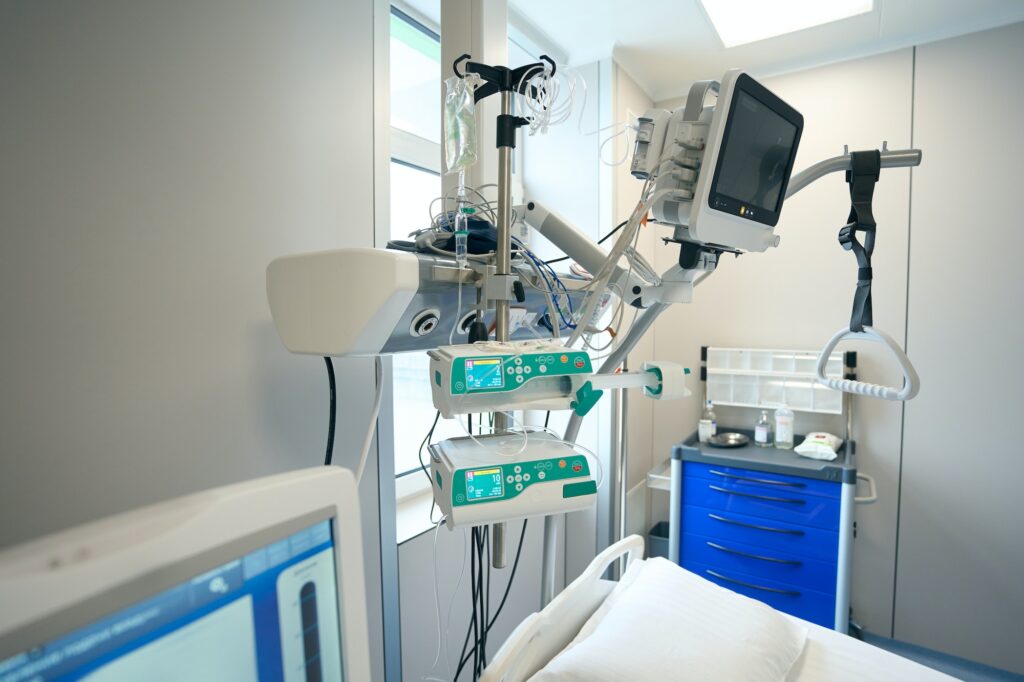Yalova Cardiology
Everything you need to know about your heart health. Your health is entrusted to us with high technology in Yalova.
treatments and servıces
ASD/PFO Shutdown
ASD/PFO Shutdown
If you have been diagnosed with a hole in your heart, such as an Atrial Septal Defect (ASD) or Patent Foramen Ovale (PFO), your doctor may have recommended closing the hole with a minimally invasive procedure. In this article, we will look at what an ASD and PFO are, what symptoms and complications they can cause, how the closure is performed and what to expect during the procedure and recovery.
What is an ASD/PFO?
An atrial septal defect (ASD) is a congenital heart defect with a hole in the wall (septum) that separates the upper chambers of the heart (atria). The hole allows blood to flow from the left atrium to the right atrium, which can cause the heart to work harder than it should. ASD is typically diagnosed in childhood but may not be detected until adulthood.
Patent Foramen Ovale (PFO) is a type of ASD that occurs when the foramen ovale, a hole in the septum between the atria found in all babies, does not close after birth. In some people, the hole never closes completely, allowing blood to flow between the atria.
Symptoms of ASD/PFO
Many people with ASD/PFO do not experience any symptoms and may not even know they have the condition until it is detected during a routine examination or tests for another medical condition. However, some people with ASD/PFO may experience
Shortness of breath
Fatigue
Irregular heartbeat (arrhythmia)
Stroke
Migraine
High blood pressure in the lungs (pulmonary hypertension)
Swelling in the legs, feet or abdomen
Cyanosis (blue tint on the lips or skin)
ASD/PFO Complications Left untreated, ASD/PFO can lead to serious complications, such as :
Heart failure
Arrhythmias
Pulmonary hypertension
Stroke
Migraine
ASD/PFO Closure Procedure
Closing an ASD/PFO can be performed using a minimally invasive technique called Transcatheter Closure. During the procedure, a thin, flexible tube (catheter) is inserted into a blood vessel in your groin and guided to your heart. A small, umbrella-shaped device is then passed through the catheter and placed into the hole in your heart. Once the device is in place, it is opened to close the hole and prevent blood from flowing through it.
The procedure usually takes 1-2 hours and is performed under local anesthesia with light sedation. Most patients can go home the same day or the next day.
Recovery after ASD/PFO Closure
After the procedure, you will need to rest for a few hours and avoid strenuous activities for a few days. You may experience some pain or bruising at the insertion site, but this will subside within a few days. Your doctor will give you instructions on how to care for the insertion site and what activities to avoid during the healing process.
Most patients can return to their normal activities within a week after the procedure. However, you should avoid heavy lifting or strenuous exercise for several weeks to allow the insertion site to fully heal.
Risks and Complications of ASD/PFO Closure
Like any medical procedure, there are some risks associated with ASD/PFO closure. These include:
Bleeding or hematoma at the insertion site
Infection at the insertion site
Allergic reaction to anesthesia or contrast media
Damage to the heart or blood vessels
Device-related complications (such as migration or erosion of the closure device)
It is important to discuss the potential risks and benefits.
If you are considering ASD/PFO closure, it is important to talk to your doctor about your options and whether this procedure is the right choice for you. The following information provides an overview of the procedure, but individual circumstances may vary.
Risks and Complications:
As with any medical procedure, there are risks and potential complications associated with ASD/PFO closure. These may include:
Bleeding or infection at the catheter insertion site
Arrhythmias (irregular heartbeats)
Blood clots
Stroke or transient ischemic attack (TIA)
Perforation or rupture of the heart or blood vessels
Device-related complications such as device malposition or embolization
Recovery
After the procedure, you will usually spend some time in the hospital for observation and monitoring. Your doctor will give specific instructions for post-procedure care, which may include
Limiting physical activity for a period of time
Taking medicines such as blood thinners as prescribed to prevent blood clots
Follow-up appointments with your doctor to monitor your progress
It is important that you follow your doctor’s instructions carefully and report any unusual symptoms or side effects immediately.
Conclusion
ASD/PFO closure is a minimally invasive procedure that can be an effective treatment option for certain heart conditions. It involves inserting a catheter into a blood vessel and guiding it into the heart to close an opening between the chambers of the heart. The procedure has a relatively low risk of complications and typically requires only a short recovery time.
If you are considering this procedure, it is important to talk to your doctor about your options and whether it is the right choice for you. Your doctor can help you understand the potential benefits and risks of the procedure and can provide guidance on preparing for and recovering from the procedure.

